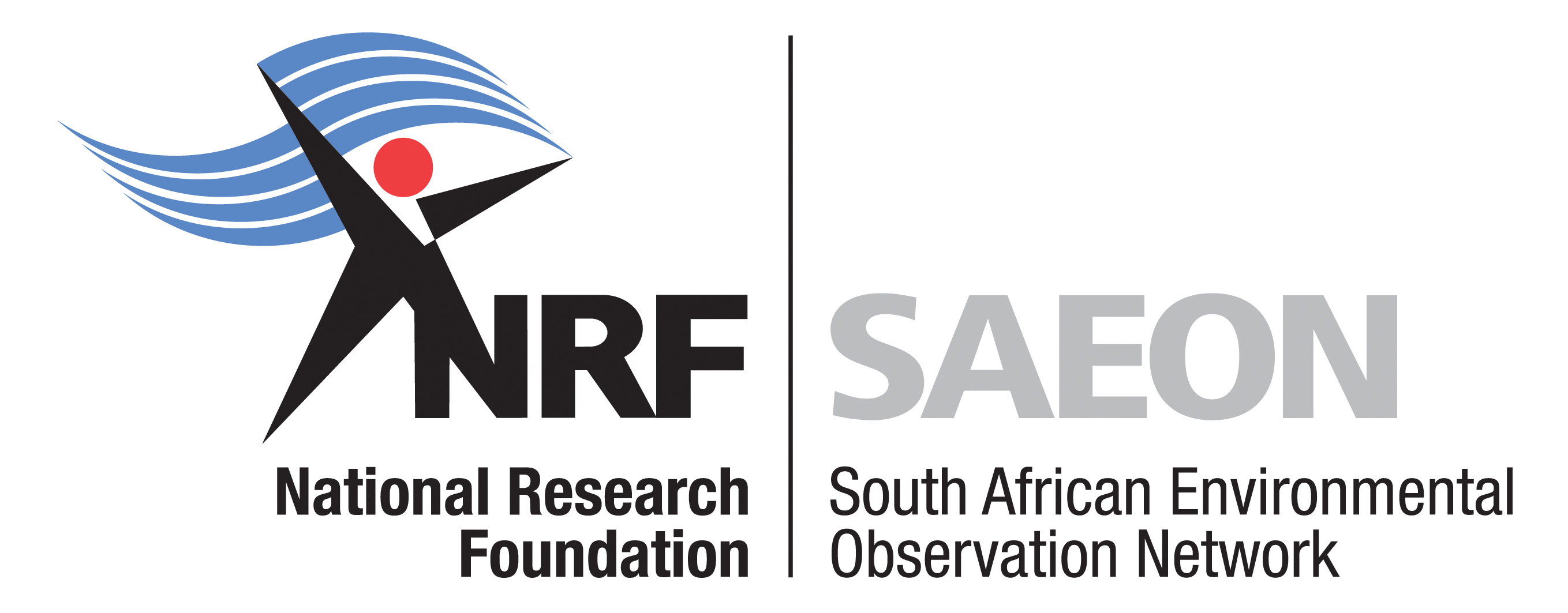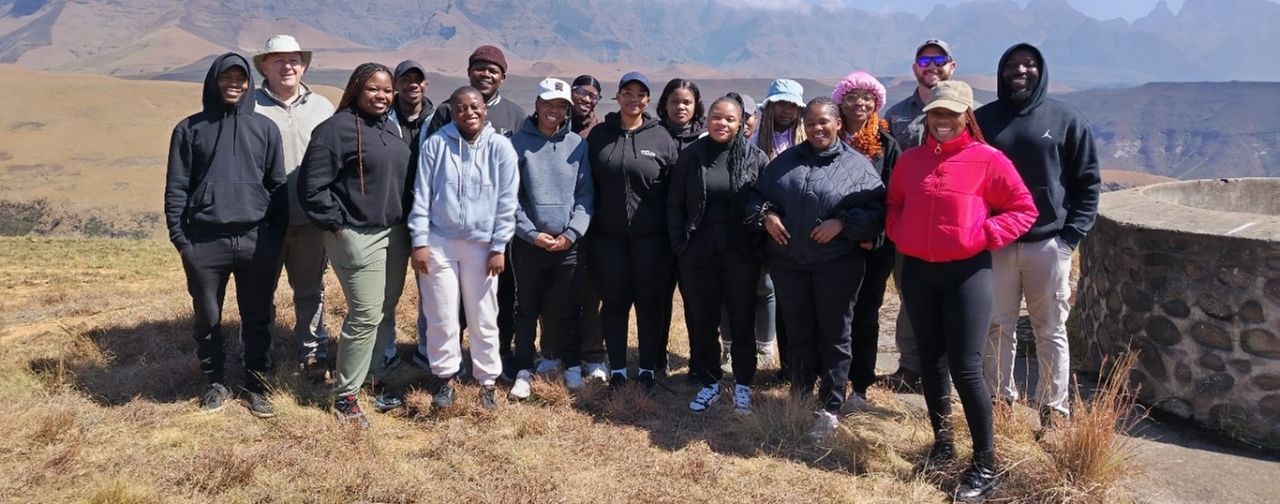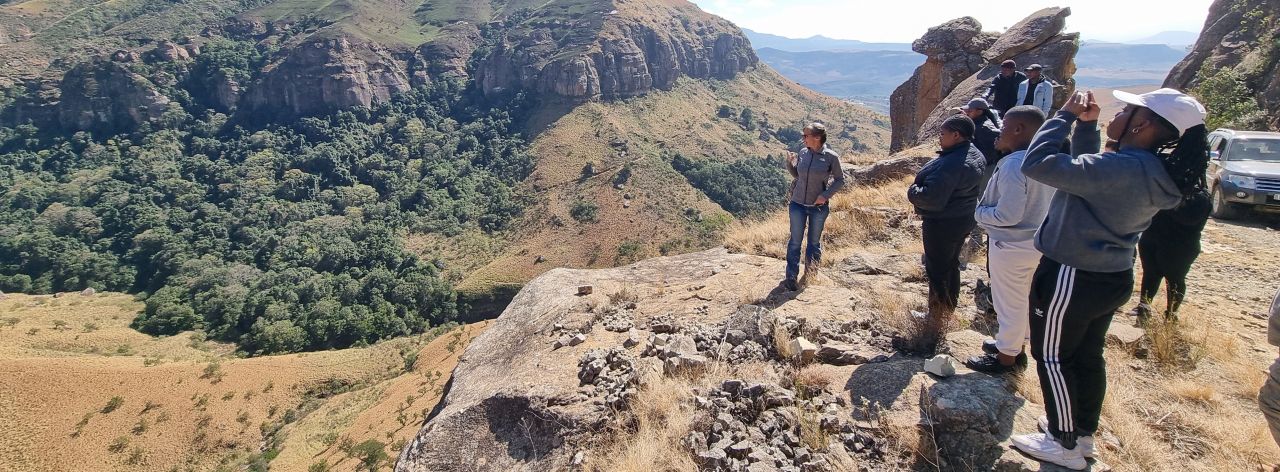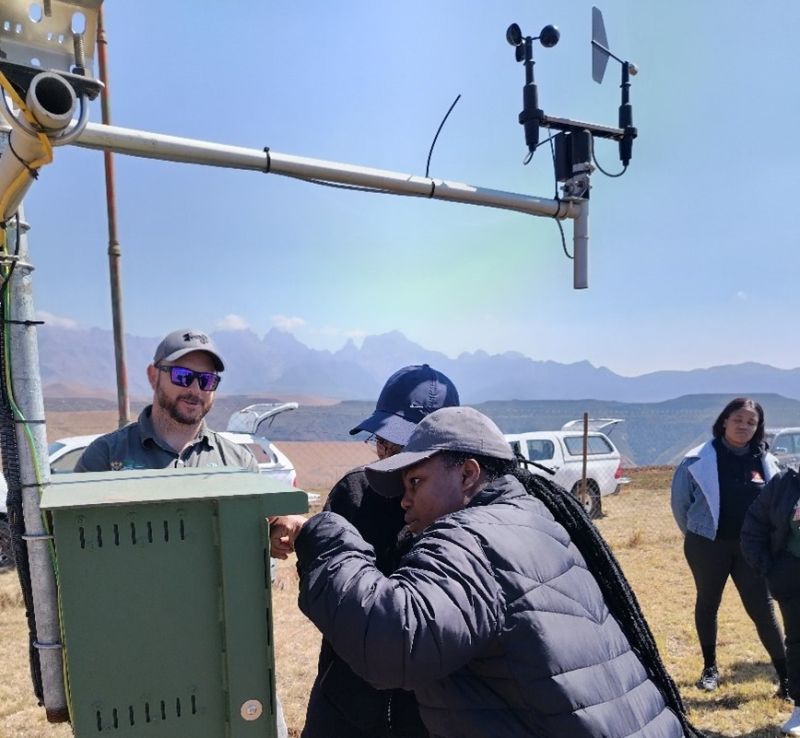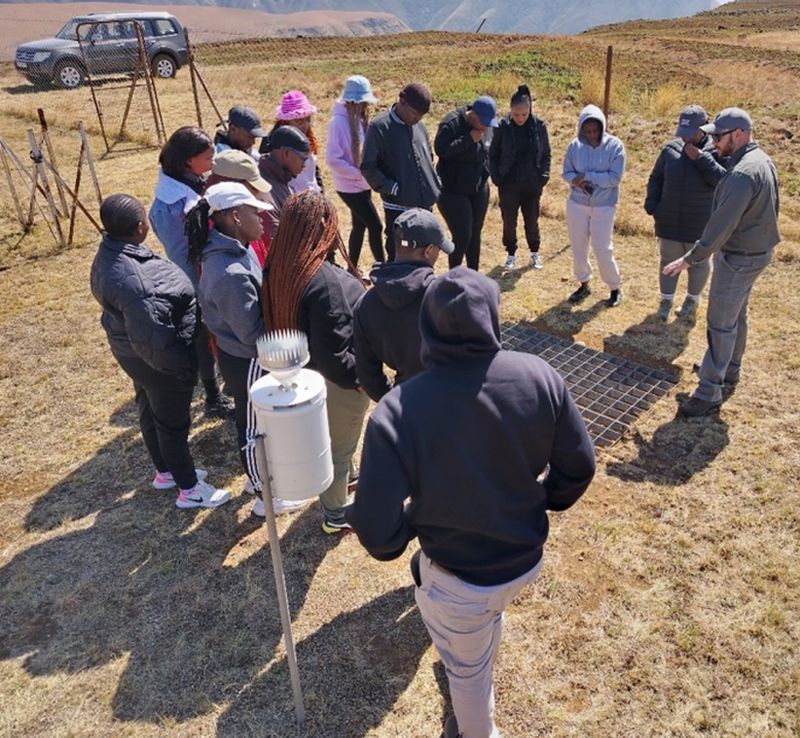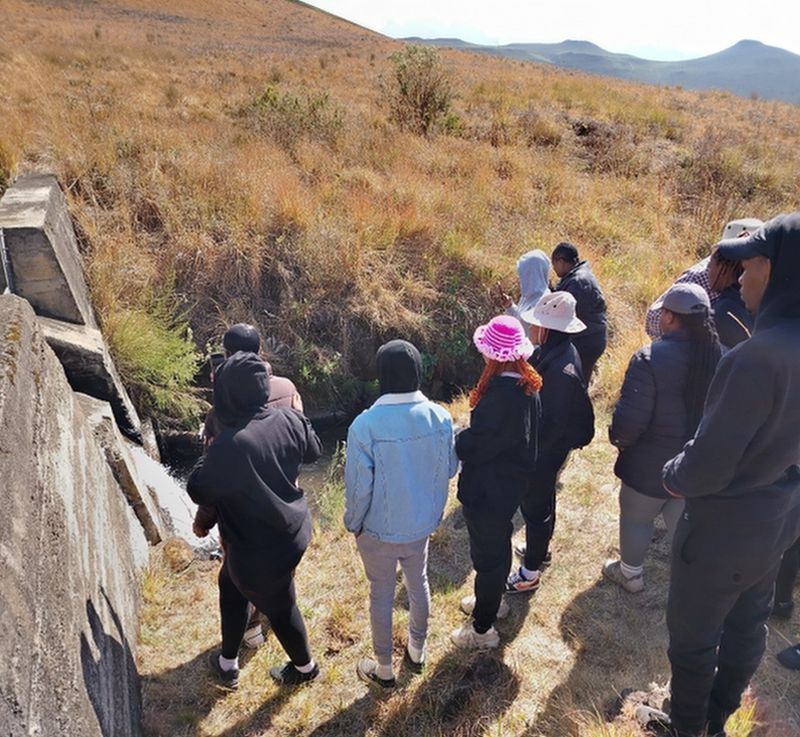eNews
#04 2024
SAEON’s Cathedral Peak LTER platform provides hands-on learning for University of Johannesburg Honours students
By Susan Janse van Rensburg, Coordinator: Grasslands Node, NRF-SAEON
How do we measure precipitation? What is the difference between precipitation and rainfall? How are carbon, biodiversity, fire and hydrology interlinked? What is the value of long-term burning trials? What does an eddy covariance system look like and what does it do?
These are just some of the questions addressed during a field trip hosted by NRF-SAEON for the Strategic Environmental Planning Honours class from the University of Johannesburg (30 August to 1 September). After a lecture which profiled the National Research Foundation (NRF) core functions, SAEON and its hosted infrastructures as well as the NRF ringfenced bursary programme, students were treated to a ride up Mike’s Pass into the SAEON Cathedral Peak Long Term Ecological Research (LTER) platform.
University of Johannesburg Strategic Environmental Planning Honours students on a visit to the Cathedral Peak LTER site, led by Professor Chris Curtis (second from left). (Photo: Susan J van Rensburg)
Several of the students have a background in remote sensing. This was a unique experience for them to see first-hand what different ecosystems look like and understand why in-situ data collection is so vital for training in remote sensing products. Students were challenged to observe and explain what they were seeing with their own eyes and work out why different ecosystem types occur where they do.
They were then treated to detailed explanations of meteorological variables at the Mike’s Pass weather station, which has historic data dating back to the 1940s. Many learnt for the first time the different methods of collecting precipitation data, as well as the range of other meteorological measurements undertaken and why these are important.
The coordinator of the Grasslands Node, Susan J Van Rensburg, explains how important grasslands are for water delivery in South Africa and the negative impact that both indigenous and exotic trees have on South Africa’s water supply (Photo: Kent Lawrence)
Water resources management – Catchment 6
Next on the agenda was a visit to a weir in the famous Catchment 6, where the focus was on water resources management. Discussions centred on how important grasslands are for water delivery in South Africa and the negative impact that both indigenous and exotic trees have on South Africa’s water supply.
Some of the more adventurous students then opted for the walk up to the eddy covariance tower, while others bumped along in the vehicles. At the tower, the links between carbon, biodiversity and hydrology were discussed. More diverse systems with greater diversity of rooting dynamics, input more carbon into the soil, which improves the soil’s water retention, providing a slow and sustained release of water, especially during the dry winter season when it is most needed.
SAEON Grasslands Node Technician Kent Lawrence, encouraging students to work out how to open the security box, housing the Automatic Weather station logger box.
Kent explains the gold standard for measuring precipitation, the ground level gauge, at the Mike’s Pass weather station site (Photo: Susan J Van Rensburg)
Students learn how streamflow gauges are used to determine flow and volumetric discharge, aiding their understanding of how grasslands provide this valuable ecosystem service in one of South Africa’s most important strategic water source areas (Photo: Susan J Van Rensburg)
Degraded catchments on the other hand, with less diversity and grass groundcover, have more “fluxy” streamflow linked to rainfall events, and lower base flows during the dry season. The value of South Africa’s mesic grasslands for effectively sequestering and storing carbon in the soil was also highlighted. Students were encouraged to think about how these dynamics may change in a future with increasing temperature, changes in rainfall patterns and frost occurrence.
The students were also taken to the Brotherton Burn trials which have been maintained for over 40 years. Multiple researchers utilise these trials to answer a range of questions, such as what the impact of the different burning regimes is on species diversity, rooting competition, soil microbial dynamics, carbon dynamics and soil respiration.
The site visit included a warming experiment to understand the impacts of future warming on all these processes. After discussing the value of long-term data sets, the students were challenged to suggest trails and data collection they would initiate now, that may be valuable in 40 years’ time.
Citizen science techniques
On day two of the field trip, the students were taught a range of citizen science techniques for assessing water flow and river condition. They were able to do actual measurements using these tools to hone their practical skills and inculcate their learning “by doing”.
This is just one example of the impact of SAEON’s research platforms on human capital development. These site visits provide much needed practical exposure for students in a manner that stimulates thinking and understanding regarding the integrated nature of our ecosystems, the processes shaping them and how humans are changing these dynamics.
